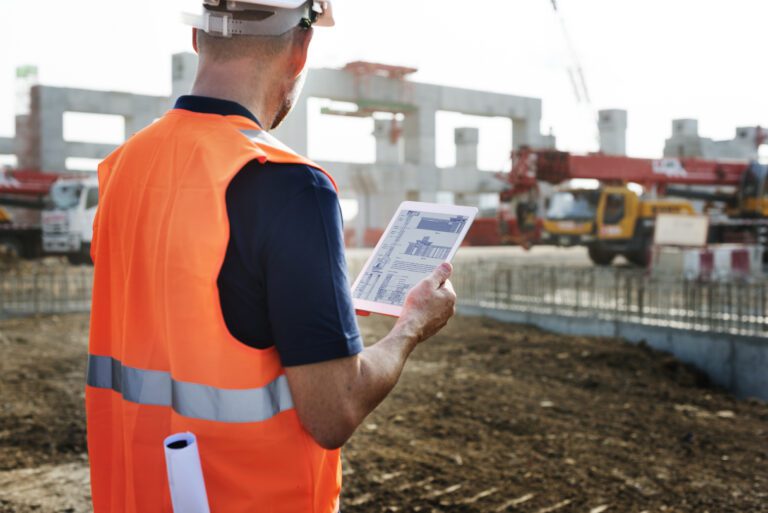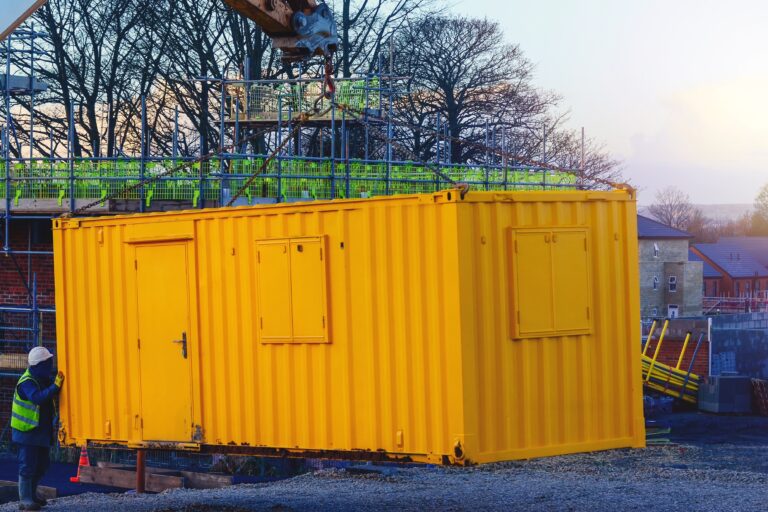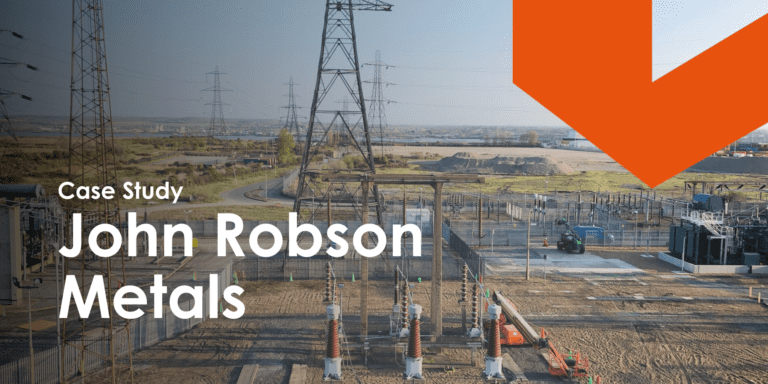10th May, 2022
A Manager’s Guide to Construction Planning
Construction planning is a big part of a construction manager’s job role to projects on track. We show you how to create your own construction plan & more!
As a construction manager, you’ve got to master construction planning.
You have deadlines to meet and clients to impress, so it’s important projects are completed on time and within budget.
This sounds easier said than done, as any construction project has multiple phases, each of which brings their own set of challenges.
You’ll also be responsible for managing various teams, ensuring that their work is finished to a high quality so that the next phase of the project can commence.
There are lots of individual components that must come together to ensure a successful project.
This all boils down to effective constructing planning, as this lets you outline each and every stage of the job so that you can work more efficiently. It also reduces the likelihood of unnecessary costs as you can distribute the right amount of resources, without having to make last-minute changes further down the line.
In this blog post, we’ve broken down the five stages of construction planning so that you can be better prepared when it comes to your next project. We’ll also be exploring how project management software can help, to ease some of the day-to-day pressure.
But, first things first; let’s refresh what construction planning entails in case you’re new to the role.
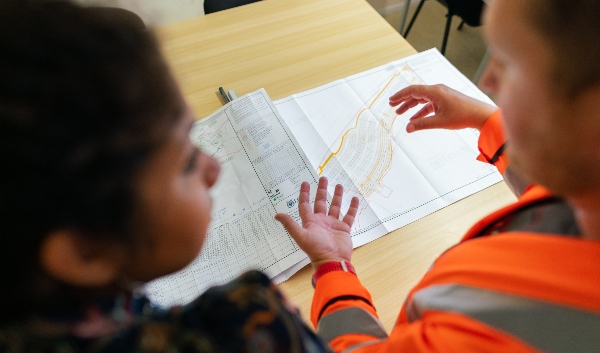
What Is Construction Planning?
Construction planning involves laying out how you’re going to manage and execute a project, from design, to build, through to completion.
Your construction plan should identify all construction activities, outline the construction schedule, and plan out your team structure (including whether or not you will use a contractor or subcontractors).
It should detail the activities required and the schedule for each part in the construction process so that every member of your team understands the timeline of the project. This facilitates smooth communication and means everyone is on the same page before work has started.
This can also increase your team’s productivity and efficiency by streamlining communication as they can always refer back to the plan if they’re unsure about something.
Any construction manager should know that a well-crafted construction plan is important to keep the project on schedule and within budget. By knowing what resources you need from the get-go, you can ensure you have everything in place to fulfil your clients expectations.
It also gives clients an idea of what is involved, so they know the deliverables from an early stage. This is important in maintaining strong client relationships and ensuring both parties are aligned.
Key Construction Planning Terms
Whether you’re new to the role, or have been in the post for quite some time, it’s useful to be aware of some important construction planning terms.
This facilitates smooth communication and enables you to develop a successful construction planning process:
- Construction bidding: This involves submitting a proposal for a project to a client. A construction bid includes an accurate cost estimate for the project and the client must accept the bid before work can commence.
- Baselines: Also referred to as performance measures, baselines are the approved starting points of the construction project. Establishing baselines is important because it can help you determine whether the project is on track.
- Baseline project management: The baseline project management plan establishes what steps management and the rest of the team may take if the project deviates from the course established by the baselines.
- Blueprint drawings and specifications: These refer to the drawings that show the layout of the finished project. Blueprint drawings and specifications may also include a detailed list of the items needed to build the structure.
- Submittals: A contractor submits these documents to the architect for approval before the project can begin. Submittals may include requests for equipment and materials, drawings of the project and instructions for the construction team.
- Scope documentation: The scope documentation contains feedback from key stakeholders and provides a short financial timeline for the project. It typically includes deadlines, functions, deliverables, goals and specific tasks for the project.
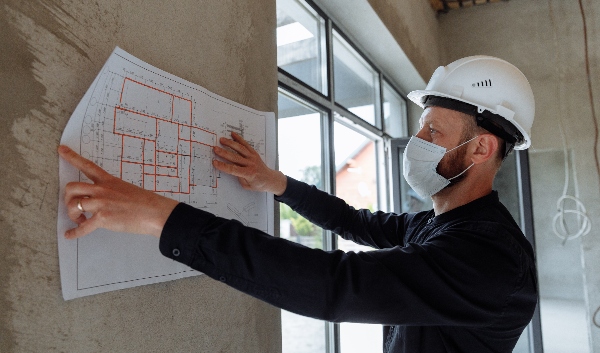
Steps of Construction Planning
Step 1: Identify key resources
Before you start creating your construction plan, you need to outline what key resources you need to complete the project first. This ensures that you have everything you need before you start the process.
Many project managers use a project initiation document (PID) to create an initial list of resources.
A PID focuses on the areas below:
- People: Consider how many people need to work on this project and work out if you need to hire any subcontractors, such as plumbers or welders.
- Materials: Consider which materials and equipment you need to complete the project as you will have to source them from a supplier. Think about where you will find these items and how much you will need.
- Budget: Estimate the total cost for this project, taking into account the cost of labour, materials, and equipment in your total budget.
Creating a PID is very helpful for construction managers as it allows them to outline the resources they need to complete a project in the first instance.
A PID can also be shared with key stakeholders and internal team members to ensure everyone clearly understands what is required of them.
You could also use construction scheduling software to help you quickly determine the cost, scope, deadlines, and materials needed for a project as this can simplify important details.
Step 2: Draft a plan
The next step of the process is to turn the PID into a robust plan by setting clear and actionable goals.
You should start by identifying SMART goals which will act as your guidelines for the entire project.
By SMART goals, we mean those that are specific, measurable, achievable, relevant, and time-based.
Let’s explore these in more detail:
- Specific: Make sure your goals are specific by asking yourself what key deadlines and milestones need to be tracked for the project to be a success.
- Measurable: Determine how you can measure the success of your project. Consider what baselines need to be established and how to communicate these baselines with the rest of your team.
- Achievable: Consider how achievable your deadlines and goals are and make adjustments as needed to set your team up for success.
- Relevant: Consider how important achieving each goal is to the success of the overall project. This can help you prioritise your goals and ensure your team focuses on completing the most important tasks first.
- Time-based: Identify a clear timeline for each goal. This can help you stay on track, monitor the project’s overall progress and provide clear guidelines for your team.
Step 3: Meet with key stakeholders
The next step involves scheduling a meeting with your key stakeholders to discuss the project in more detail.
You should also share the information developed in your PID so that they can see how the project is going to be managed from start to finish.
Use this opportunity to get their feedback and ask if they have any questions about what the project entails. It’s important you have their approval before any work begins.

Step 4: Assign responsibilities
Once you have your SMART goals and you’ve obtained approval from stakeholders, it’s time to assign responsibilities to your team.
Some of role and responsibilities include:
- Project sponsor
- Additional project managers
- End-users
- Defined business experts
- Project team members
The best way to approach this is schedule a meeting with your team, set expectations, and allow them to ask questions. This ensures they understand exactly what is required of them which helps mitigate any issues later on.
Make sure you’re clear and concise when explaining different responsibilities, and confirm each team member’s role. You should also share when the deadlines are and tell them any additional information that will help facilitate a smooth workflow.
It’s also important to tell your team when you expect to see progress so that they have some goals to work towards and can prioritise their tasks.
To make this easier, you could use a construction scheduling program to help you communicate throughout the project and share important documents with ease.
Step 5: Track your performance
By monitoring how your team is performing through the duration of the project, it can help you stay on track and meet deadlines.
Some of the key performance indicators (KPIs) you could monitor include:
- Project objectives: This includes keeping track of your budget and schedule to make sure your team is staying within the plan.
- Project performance: This involves keeping track of any changes made throughout the project. If your team comes across a challenge, you can use your baseline project management to make adjustments.
- Quality: This involves making sure your team is abiding by all of the necessary legal and safety protocols throughout the entire project.
Step 6: Evaluate the project
At the end of the project, revisit the SMART goals you set to see what your team achieved. Ask yourself, are there any areas of improvement for the future?
By knowing this information, you can incorporate the lessons you and your team have learned to create a better construction plan moving forward.
This allows you to make any necessary adjustments so that you can be even more successful when working with other clients. There’s always room for improvement so this is a good exercise to ensure you and your team are working in the best way possible.
You should call a final meeting to discuss your thoughts and findings with your team, and also to talk about their performance. At this stage, encourage your team to ask questions and be open to their feedback, as this can provide you with valuable insight for the future.
The final step is to create a project budget that details how much the project cost. Compare this figure with the original budget you set to see how accurate it was. Make sure to share these findings with key stakeholders and include them in your project report.
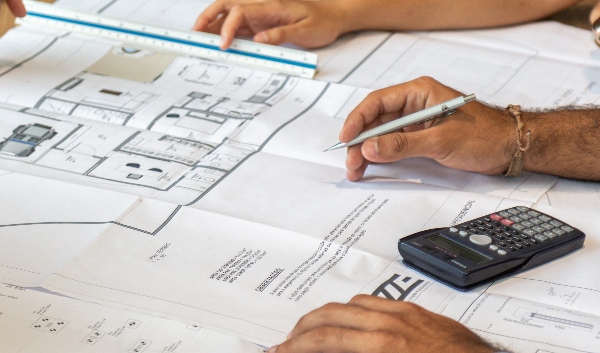
How to Maintain Your Construction Plan
Having your construction plan is one thing, maintaining it is another.
Below are some ways you can manage your construction plan from one project to the next.
Create a roadmap
A construction project comprises a range of smaller projects in order to reach the final outcome (for example digging the foundation, laying the concrete, installing electricals etc).
Before you reach the final deliverable, all of these phases have to work together as they are aimed towards a shared goal. Orchestrating this process can be a headache, which makes a roadmap key.
Think of your roadmap as a visual tool, almost like a Gantt chart. However, it needs to show several projects together on a single timeline so that you can work more efficiently and have a complete overview.
Meet with stakeholders on a regular basis
A stakeholder has a keen interest in the construction project.
Although you share the plan with them, this doesn’t mean they have no other type of involvement until the project is complete. They’re an active part of this process, and they might want to receive further updates about the progress of the build.
This can be crucial when it comes to managing their expectations. More often than not, they will have change requests during the execution stage that will directly impact the plan.
Prioritise quality
Whilst completing the project on time and within budget is key, the quality of the build should never be compromised.
As a construction manager, it’s your job to ensure that any decision made is not at the expense of the integrity of the structure, as you want the project to be a success.
To avoid these consequences, quality must be at the top of your priority list. Make sure your project plan identifies set benchmarks, and keep track of these throughout the execution of the project plan.

Construction Planning Software
As you can see, the construction planning process is comprehensive and involves a lot of different stages.
From creating a construction plan to maintaining quality control moving forward, there’s a lot to get right so that you can maintain client satisfaction.
Thankfully, YardLink can ease some of this pressure and help make the construction planning process much smoother.
At the heart of any construction project is having the right equipment. Usually this involves ringing several different suppliers, trying to secure the right price and trying to find a date when the equipment can be delivered to site.
This is not only time consuming, but also costly – two things any project manager wants to avoid.
But, there is an easier way. With YardLink, all of your construction needs live in one central place. Whether you’re wanting to hire a Skip, Dumper, Large Excavator, Drilling Tools, or Site Welfare Units, you’ll find it all in one central location.
In minutes, you can set up an online account and manage all of your hires from your fingertips. Save time ringing several companies, as we’ve done all of the hard work for you. All of our suppliers are vetted first, so you can be confident you’re receiving the best possible service.
To find out more, get in touch with a member of our team.
A Manager’s Guide to Construction Planning
Construction planning is a big part of a construction manager’s job role.
Having a construction plan is essential so that everyone involved understands the requirements of the project, and has something solid to work towards.
It’s also a great way of identifying which resources are needed before work has begun so that no time is wasted during the actual build. From allocating members of your team to understanding what methodologies are going to be used, this document greatly increases the likelihood of a successful project.
As we’ve discussed, construction projects tend to be large and complex with a lot of moving parts. Therefore, the information included in the construction plan, the less likely it will be that issues arise during the execution phase.
Hopefully after reading this post, you feel more confident about developing your own construction plan and understand its importance.
When it comes to sourcing your equipment, you have one less thing to worry about. By using the YardLink platform, you can hire your plant and machinery at the click of a button, and manage all of your hires through an easy-to-use dashboard.
For more information, simply get in touch!
YOU MIGHT ALSO BE INTERESTED IN


